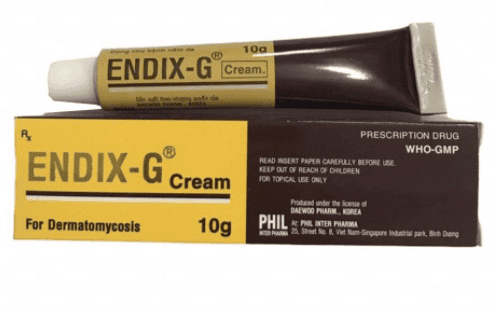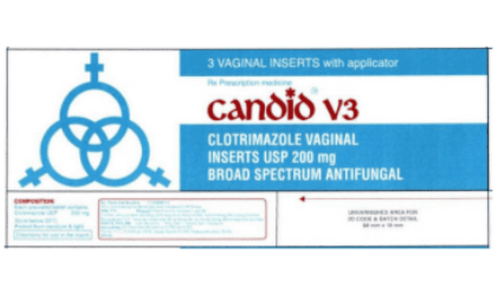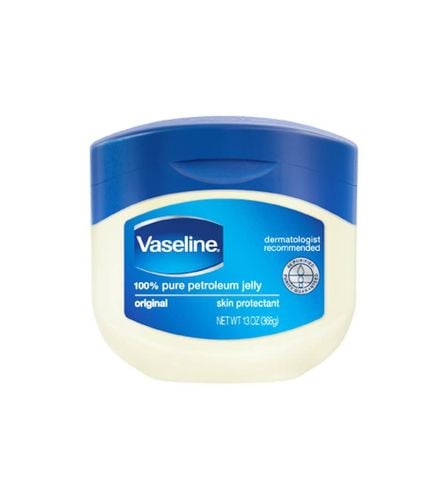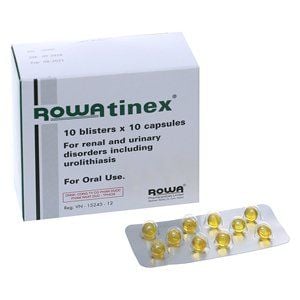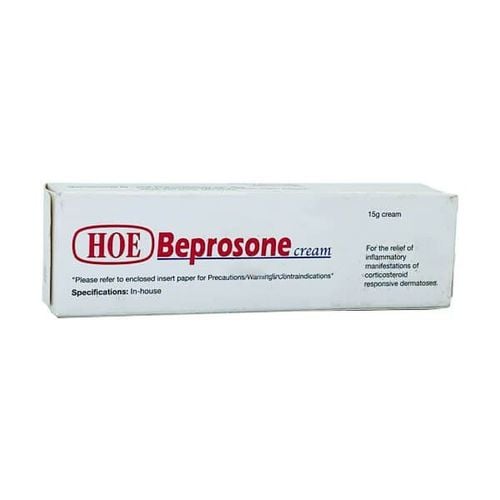Candid B medication is produced and registered by Glenmark Pharmaceuticals Ltd. It belongs to the group of dermatological treatments. So, what are the uses of Candid B medication and in what cases is it used?
1. What is Candid B Medication?
Candid B medication is produced and registered by Glenmark Pharmaceuticals Ltd. It belongs to the group of dermatological treatments. The main ingredients of Candid B are Clotrimazole (10mg/gm) and Beclometasone (0.25mg/gm), formulated as a topical cream, presented in a box containing a 15-gram tube.
2. Uses of Candid B Medication
2.1. Effects of Candid B Medication
Clotrimazole has a broad-spectrum antifungal effect, inhibiting the growth of most pathogenic fungi such as yeast, dermatophytes, and Malassezia furfur. It is a synthetic imidazole derivative, structurally similar to Miconazole. The mechanism of action of Candid B involves affecting the permeability of the fungal cell wall through the lipids of the cell membrane. Candid B inhibits the synthesis of Ergosterol in the cell wall at therapeutic doses.
Betamethasone dipropionate is a synthetic corticosteroid with strong anti-inflammatory, anti-itching, and anti-rheumatic effects. It also has immunosuppressive effects at high doses, reducing swelling through its anti-proliferative effects on psoriasis.
2.2. Indications for Candid B Medication
Candid B is indicated for skin allergies and inflammations such as allergic dermatitis, contact dermatitis, exfoliative dermatitis, seborrheic dermatitis, acute and chronic eczema, chronic lichen planus, psoriasis, urticaria, and pruritus. It is also used to treat intertrigo, diaper dermatitis, vulvovaginitis, paronychia caused by Candida, secondary infected dermatitis causing hair loss, fungal skin infections, dandruff, and to soothe skin in cases of minor burns, insect bites, and mosquito bites. It is used topically for superficial fungal infections such as Candida infections, dermatophyte infections, and Tinea versicolor when accompanied by eczema symptoms.
3. How to Use and Dosage of Candid B Medication
3.1. How to Use Candid B Medication
Clean the infected skin area and dry it with a soft towel. Apply a thin layer of Candid B cream over the entire affected area. Do not cover the application site with a bandage.
Once eczema symptoms have subsided, switch to another antifungal cream until fully healed. Do not use for more than 4 weeks.
3.2. Dosage of Candid B Medication
The usual dosage is 2 to 3 times a day. However, this is only a reference dose; treatment should follow the doctor's prescription based on the nature and condition of the disease.
4. Side Effects of Candid B Medication
Patients using Candid B may experience side effects such as skin atrophy, skin cracking, itching, rash, irritation, hypopigmentation, folliculitis, blistering, erythema, contact dermatitis, granular lesions, excessive sweating, localized depigmentation, and dermatitis when bandaged. Using topical steroids on large skin areas can lead to systemic absorption of steroids. Therefore, do not use Candid B on large skin areas in pregnant women. If any adverse symptoms occur, patients should contact their doctor for appropriate guidance and timely management.
5. Drug Interactions
Currently, there are no reports or studies on the interactions of Candid B with other drugs and foods. However, potential interactions that may reduce the effectiveness of the medication or increase side effects cannot be ruled out.
6. Precautions When Using Candid B Medication
6.1. Contraindications for Candid B Medication
Do not use Candid B on patients with chickenpox, tuberculosis of the skin, herpes simplex, syphilitic skin ulcers, smallpox, or measles. It is contraindicated for patients with a history of hypersensitivity to any components of Candid B, including excipients. Pregnant women should use it cautiously, avoiding large doses or prolonged use during pregnancy.
6.2. Cautions When Using Candid B
Use Candid B cautiously in the following cases:
- Do not use Candid B in the ear if the eardrum is perforated or in the eyes.
- Candid B is well-tolerated, but if irritation occurs, discontinue use immediately.
- Be cautious when using topical steroids on large skin areas as it can lead to systemic absorption.
- Do not use the medication more than 4 times a day.
- Use cautiously in pregnant and breastfeeding women, only under a doctor's prescription.
Store Candid B in a dry, cool place, away from direct sunlight or high temperatures, as it can alter the components and reduce the effectiveness of the medication. The appropriate storage temperature is below 30°C. Keep the medication out of reach of children.
To arrange an appointment, please call HOTLINE or make your reservation directly HERE. You may also download the MyVinmec app to schedule appointments faster and manage your reservations more conveniently.




